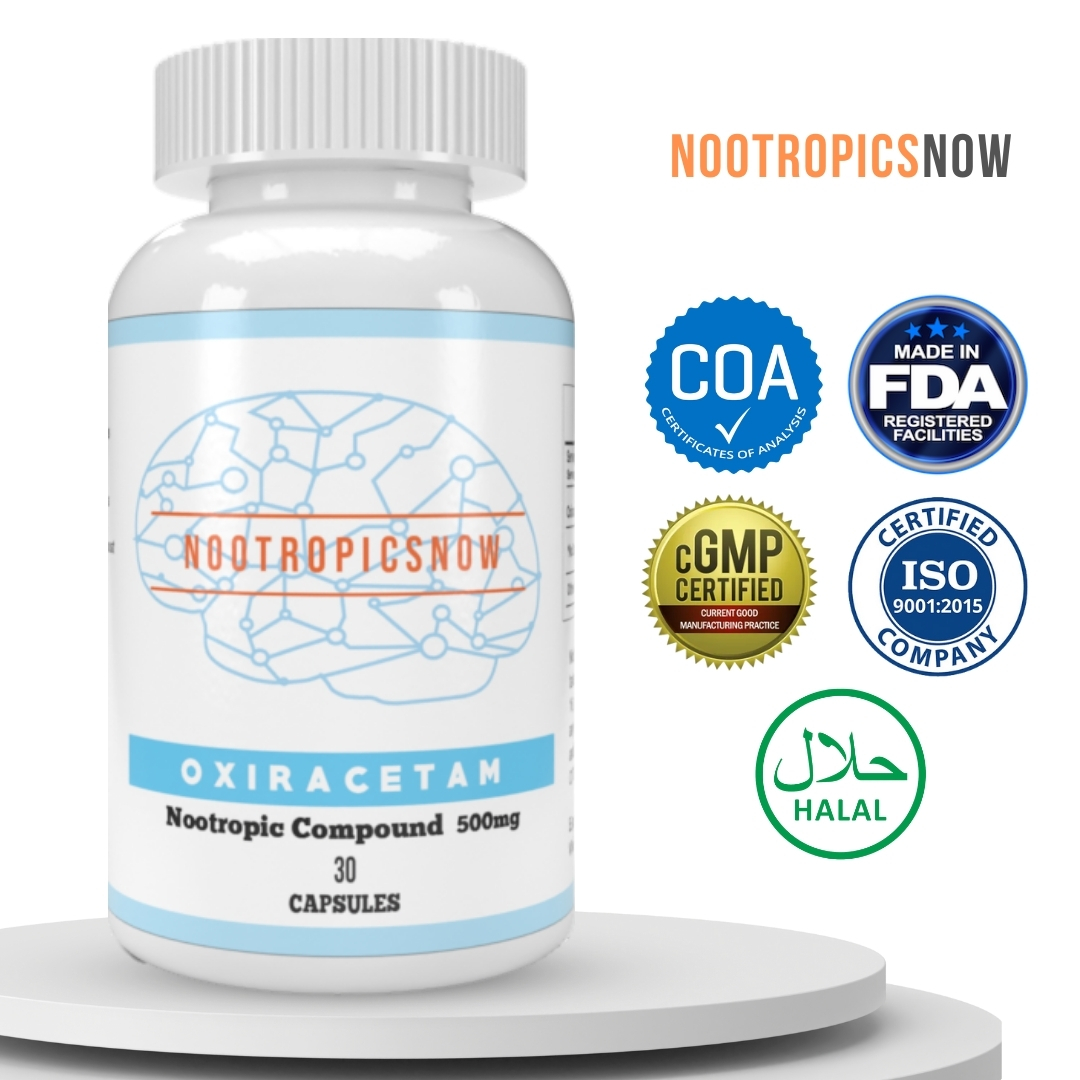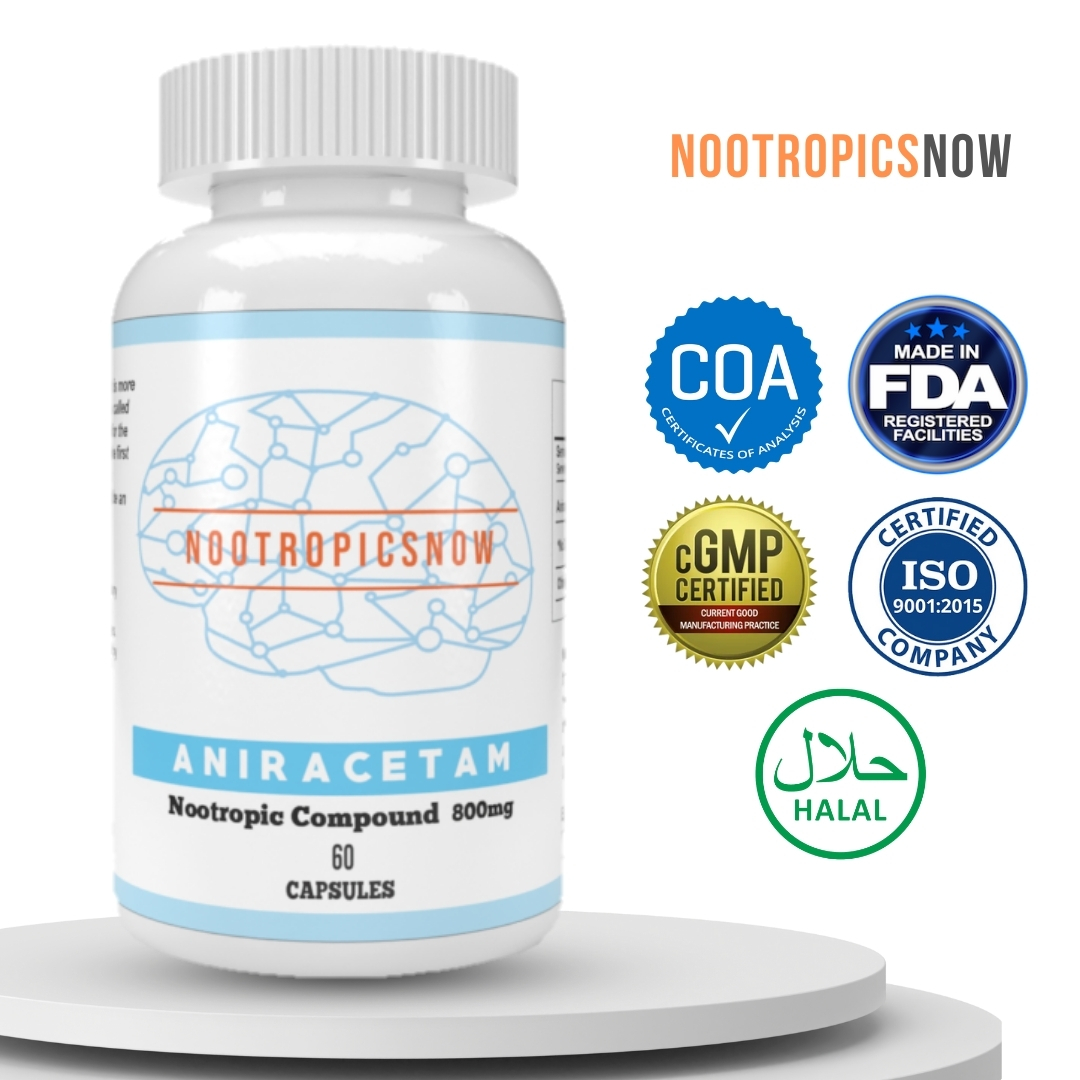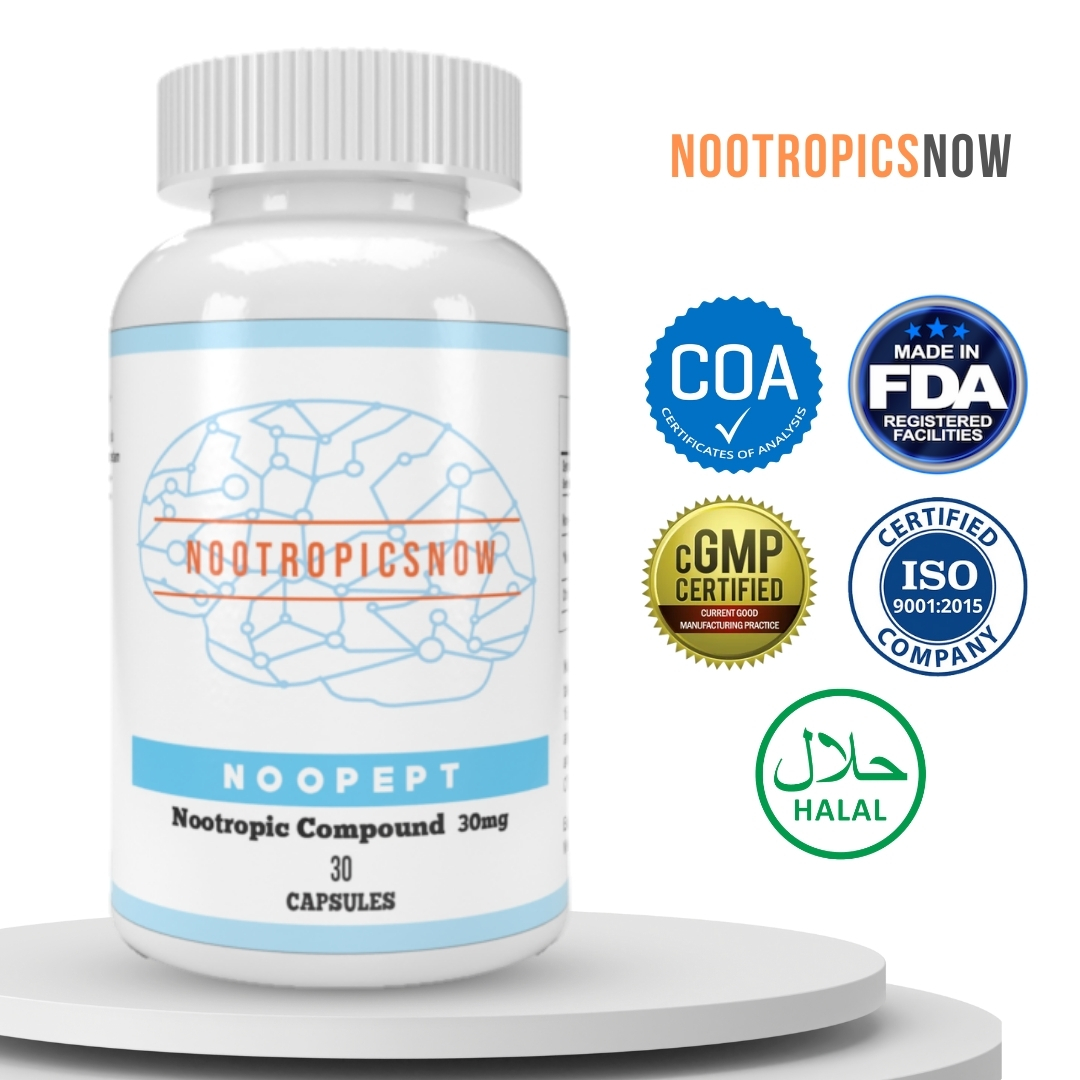Piracetam Capsules: Benefits & Uses

Piracetam Capsules: A Comprehensive Guide to Benefits, Uses, and Considerations
Piracetam capsules have garnered considerable attention within the nootropic community. As a synthetic derivative of gamma-aminobutyric acid (GABA), piracetam is marketed as a cognitive enhancer, aiming to improve memory, learning capacity, and overall mental performance. Understanding the mechanisms, potential benefits, side effects, and legal considerations surrounding piracetam is crucial before incorporating it into your regimen.
Understanding Piracetam
Piracetam is considered one of the original nootropics, pioneered in the 1960s. It is believed to enhance cognitive functions by modulating several neuronal processes. Unlike stimulants that provide temporary energy boosts, piracetam purportedly works by improving the brain’s overall function and efficiency. The purported benefits of piracetam extend beyond simple cognitive enhancement, potentially including neuroprotective effects and improvements in certain neurological conditions.
Mechanisms of Action: How Piracetam Works

The exact mechanisms of action of piracetam are still under investigation. However, several theories explain its potential cognitive-enhancing properties:
Potential Benefits of Piracetam Capsules
Numerous studies and anecdotal reports suggest that piracetam capsules offer a range of cognitive and neurological benefits. Note that many of these benefits are still under investigation, and results can vary among individuals.
1. Memory Enhancement
One of the most commonly cited benefits of piracetam is its ability to improve memory. Specifically, it is thought to enhance both short-term and long-term memory by improving the encoding, consolidation, and retrieval of information. Consequently, students and professionals find it useful for academic performance and knowledge retention.
2. Improved Learning Capacity
Piracetam purportedly facilitates learning by enhancing the brain’s ability to form new neural connections and process information efficiently. This can lead to faster and more effective learning experiences, regardless of the subject matter. For instance, it may help in acquiring new skills and absorbing complex information.
3. Increased Mental Clarity and Focus
Many users report experiencing increased mental clarity and focus after taking piracetam capsules. They note an enhanced ability to concentrate on tasks, filter out distractions, and maintain attention over extended periods. Therefore, it potentially helps people with attention deficits and demanding workloads.
View Product
4. Enhanced Cognitive Processing Speed
Piracetam is believed to accelerate cognitive processing speed, enabling users to think more quickly and efficiently. It enhances reaction times and improves the ability to analyze and respond to complex information effectively. Therefore, it’s commonly used in fields demanding quick decision-making.
5. Neuroprotective Properties
Piracetam may offer neuroprotective benefits by protecting neurons from damage and promoting overall brain health. Therefore, it serves as a supplement for maintaining cognitive function over the long term.
6. Potential Benefits for Neurological Conditions
Studies suggest that piracetam could have potential benefits for certain neurological conditions:
How to Use Piracetam Capsules
Using piracetam capsules effectively involves understanding dosage, timing, and potential interactions. It is crucial to consult a healthcare professional before starting any new supplement regimen.
Dosage Recommendations
The optimal dosage of piracetam can vary depending on individual factors such as age, body weight, and cognitive goals. A typical starting dose is around 1.6 grams per day, divided into two or three doses. This dose can be gradually increased up to 4.8 grams per day if tolerated well.
It is essential to start with the lowest effective dose and gradually increase it to minimize the risk of side effects. Remember that individual responses to piracetam can vary, so adjusting the dosage based on your own experience is crucial.
Timing and Administration
Piracetam capsules are typically taken with water and can be taken with or without food. Some users prefer to take piracetam in the morning to enhance alertness and focus throughout the day. Taking it later in the day may interfere with sleep for some individuals.
View Product
Cycling Piracetam
Some users choose to cycle piracetam, meaning they take it for a specific period, followed by a break. This is done to prevent tolerance from developing and maintain the supplement’s effectiveness. A common cycling schedule is four weeks on, one week off, but this can be adjusted based on individual preferences and responses.
Potential Side Effects and Precautions
While piracetam is generally considered safe, it can cause side effects in some individuals. Additionally, it is important to take certain precautions when using piracetam.
Common Side Effects
Precautions
Stacking Piracetam with Other Nootropics
Many users choose to stack piracetam with other nootropics to enhance its effects. Stacking involves combining different substances to achieve synergistic cognitive benefits.
Popular Piracetam Stacks
Legal Status and Availability of Piracetam Capsules
The legal status and availability of piracetam vary across different countries. In the United States, piracetam is not approved by the Food and Drug Administration (FDA) for any medical use. Consequently, it is sold as a dietary supplement, though its legal status is somewhat ambiguous. This means that it is not subject to the same regulations as prescription medications.
In other countries, such as many European nations and Japan, piracetam is available as a prescription medication for specific conditions like myoclonus and cognitive impairment.
Purchasing Piracetam Capsules
When purchasing piracetam capsules, it is crucial to choose a reputable supplier to ensure product quality and authenticity. Look for third-party tested products to verify purity and potency. Online retailers, specialty supplement stores, and compounding pharmacies are common sources for piracetam capsules.
Factors to Consider When Buying Piracetam
Research and Studies on Piracetam
Numerous studies have investigated the effects of piracetam on cognitive function and neurological conditions. While some studies have shown promising results, others have been inconclusive. More research is needed to fully understand the potential benefits and mechanisms of action of piracetam.
Key Research Findings
Conclusion: Is Piracetam Right for You?
Piracetam capsules are a popular nootropic supplement with a range of potential cognitive and neurological benefits. While it may enhance memory, learning, and mental clarity, individual results can vary. Understanding the mechanisms of action, potential side effects, and legal considerations surrounding piracetam is crucial before incorporating it into your regimen.
Consult with a healthcare professional to determine if piracetam is right for you, especially if you have any underlying medical conditions or are taking other medications. Starting with a low dose, monitoring your response, and purchasing from reputable suppliers can help ensure a safe and effective experience with piracetam capsules.

View Product
Piracetam, while promising, needs a thorough understanding of its benefits and side effects. As always, informed decisions are paramount when considering incorporating any substance into your routine.
Piracetam Capsules: A Deep Dive into Uses, Benefits, and Considerations
Piracetam capsules have become a subject of interest for individuals seeking cognitive enhancement and exploring nootropic substances. This comprehensive section delves into the world of piracetam, examining its potential uses, benefits, dosage guidelines, safety considerations, and its place within the broader landscape of cognitive enhancers.
Understanding Piracetam: Origins and Mechanism
Piracetam, a synthetic derivative of gamma-aminobutyric acid (GABA), holds the distinction of being the original nootropic. Synthesized in the 1960s by Corneliu Giurgea, it became the first in a class of drugs aimed at improving cognitive function. Its mechanism of action isn’t fully understood, but various theories propose several ways piracetam affects the brain[1].
One primary hypothesis suggests that piracetam improves the fluidity of neuronal cell membranes. This increased fluidity could enhance the passage of vital substances, such as nutrients and neurotransmitters, across the membrane. Enhanced membrane function, in turn, facilitates more efficient neuronal communication[1].
Another postulated mechanism involves the modulation of neurotransmitter systems. Piracetam seems to influence the activity of acetylcholine, a neurotransmitter crucial for memory and learning. By enhancing acetylcholine’s effects, piracetam may indirectly contribute to improved cognitive performance. Furthermore, piracetam might also impact glutamate receptors, particularly AMPA receptors, which are critical for synaptic plasticity, a process vital for learning and memory[3].
Beyond these, piracetam also appears to positively impact cerebral blood flow and oxygen utilization. By promoting vasodilation and reducing red blood cell adhesion, it may enhance the delivery of oxygen and nutrients to brain tissue, supporting overall neuronal health and function[4]. The interplay of these multifaceted mechanisms might account for the diverse cognitive effects attributed to piracetam.
Potential Cognitive Benefits of Piracetam
Piracetam capsules have been linked to various potential cognitive enhancements. Research, although not always conclusive, suggests that piracetam might offer benefits in several key areas:
It’s crucial to note that while these cognitive benefits have been reported and studied, results can vary significantly among individuals. Factors such as dosage, individual physiology, and underlying health conditions can all influence the effectiveness of piracetam.

View Product

View Product

View Product
Therapeutic Uses Beyond Cognitive Enhancement
Beyond its cognitive enhancement properties, piracetam has been investigated for various therapeutic applications. While regulatory approvals vary by country, piracetam has shown promise in the treatment of several conditions:
It’s vital to remember that the use of piracetam for these therapeutic purposes should always be guided and supervised by a qualified healthcare professional.
Dosage Guidelines and Administration of Piracetam Capsules
Determining the appropriate dosage of piracetam capsules is crucial for achieving the desired cognitive effects while minimizing the risk of side effects. Dosage recommendations can vary depending on individual factors, the intended use, and the specific formulation of piracetam.
As a general guideline, a typical starting dose for cognitive enhancement ranges from 1.6 grams to 4.8 grams per day, divided into two or three administrations. Some users may start with a lower dose (e.g., 800mg twice daily) and gradually increase it to find the optimal level. For certain therapeutic applications, such as myoclonus, higher doses of up to 24 grams per day may be used, under the strict supervision of a healthcare professional[1][2].
The onset of effects can vary, with some individuals experiencing noticeable cognitive changes within a few days, while others may require several weeks of consistent use to observe significant benefits. It’s advisable to monitor your response to piracetam and adjust the dosage accordingly.
Piracetam capsules are typically taken orally with water. It’s best to take them at regular intervals throughout the day to maintain a consistent level of the drug in the bloodstream. Some users find that taking piracetam with a choline source, such as choline bitartrate or alpha-GPC, can enhance its effects and reduce the likelihood of headaches[3][4].
Safety Profile and Potential Side Effects
Piracetam is generally considered safe and well-tolerated, particularly at recommended dosages. However, like any medication or supplement, it can cause side effects in some individuals. Common side effects are typically mild and transient, and they often resolve on their own.
The most commonly reported side effects of piracetam include:
Piracetam can interact with certain medications, such as blood thinners. It’s essential to inform your healthcare provider about all medications and supplements you’re taking before starting piracetam to avoid potential interactions. Piracetam is generally not recommended for pregnant or breastfeeding women due to a lack of safety data.
Legal Status and Regulatory Landscape
The legal status of piracetam varies across different countries. In some countries, such as certain European nations, piracetam is available as a prescription medication for specific medical conditions, like myoclonus. However, it is not approved by the FDA for any medical use in the United States.
In the U.S., piracetam is often sold as a dietary supplement. As such, it is not subject to the same rigorous regulatory oversight as prescription drugs. The quality, purity, and potency of piracetam supplements can vary significantly, so it’s crucial to choose reputable brands and purchase from trusted sources.
It is recommended to stay informed about the legal status of piracetam in your region, as regulations can change over time.
Sourcing High-Quality Piracetam Capsules
Obtaining high-quality piracetam capsules is essential to ensure safety and effectiveness. It’s important to purchase from reputable suppliers who adhere to strict quality control standards. Here are some guidelines for sourcing piracetam capsules:
Considerations Before Starting Piracetam Capsules
Before embarking on a piracetam supplementation regimen, consider the following:
The Future of Piracetam Research
Research on piracetam is ongoing, with scientists continuing to explore its potential cognitive benefits and therapeutic applications. Future studies may shed more light on its mechanism of action, identify new uses for piracetam, and refine dosage guidelines.
Conclusion: Informed Choices About Piracetam Capsules
Piracetam capsules have gained popularity as a potential cognitive enhancer and therapeutic agent. Understanding its mechanisms, potential benefits, dosage, and safety is paramount for those considering its use. Ultimately, informed choices, in consultation with healthcare professionals, are the keys to responsible and effective use of piracetam capsules. By staying informed and prioritizing safety, individuals can harness the potential benefits of piracetam while mitigating the risks.









